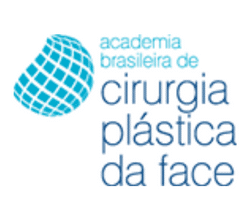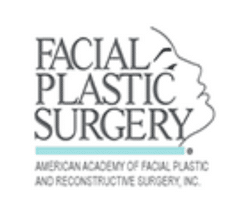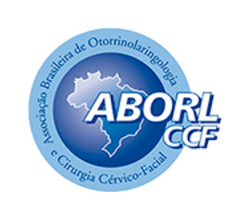RHYNOPLASTY

Rhinoplasty is the oldest plastic procedure and one of the most executed currently all over the world. The surgery aims at correcting unaesthetic deformities of the nose, either caused by genetic background or by trauma. Because it involves several structures that relate to one another (bone, cartilage, cellular subcutaneous tissue and skin), it is considered the most complex plastic surgery, demanding total expertise of the techniques. For that reason, and depending on the type of skin, hereditary background, age, besides other factors, every nose is unique. In order to achieve a successful rhinoplasty, comprehensive and frank instruction to the patient is basic requirement, guidance regarding the expectations and artistic creativity of the surgeon. This line of thought is based on our experience that derives from a track record of over 3000 surgeries carried out in almost 3 decades of experience. It is paramount to study together with the patient, through previously taken photographs, the harmony along with other elements of the face (profileplasty), answering questions and demystifying concepts regarding plastic nose jobs. The essence of rhinoplasty is achieving a subtle result, improving on the deformity, although not leaving any obvious sign, thus resulting on a more natural look.
Any person over 15-year-old may undergo rhinoplasty, age when nearly all nose structures are properly formed. Anesthesia may be general or local, under ambulatory, that is, without the need for hospitalization. Usually, the endonasal approach is taken, avoiding external scarring; nevertheless, sometimes, in order to achieve better results, we may need an open approach, specially in the cases of disproportional nose tip and on surgeries that demand grafting or reconstruction (secondary rhinoplasty). On such cases, a small incision is made on the part between the nostrils. The resulting scar become imperceptible after a few months. In some cases, it is also necessary to make incisions on the nasal flaps in order to make them smaller, whenever they are oversized, leaving a small scar along them, although, rendering it virtually invisible with the passing of time.
Generally, rhinoplasty is associated to the functional surgery of the nose, once, not rarely, the septal deviation is present, besides the hypertrophy of the nasal turbinates, causing obstruction of the air flow. Thus, it is important to mention that every rhinoplasty must be done taken into account the nasal respiratory function. Other surgeries may be carried out along with rhinosplasty, such as otoplasty, blepharoplasty and mentoplasty, aiming at obtaining a harmonious profile for the face. Although, many times, we are able to predict a result, we will always be somewhat limited by retractions and adaptations from the organism itself, requiring some retouching or adjustment in no more than 10 to 15% of the cases, even when the patient is treated by expert surgeons and mastery.
Around 17 structures are involved in the procedure, each one of them having its own healing features, a slow process that may take from 6 to 12 months, approximately. In case the need for a correction is diagnosed, no extra medical charge will be applicable, once we consider it as complementary work. In spite of that, the patient must take care of any extra expenses regarding hospital expenses. Even when the rhinoplasty is done with the most sophisticated and modern technique, the body will react, so some bruising might take place, as well as the swelling of the face, although significantly less than in the past. Nowadays, the surgery trauma is minimal, many patients are positively surprised with the result. Therefore, we can affirm today, with great satisfaction, for all patients, that there will be no postoperative pain. We have not used nasal packing a long time ago and this will result in a more comfortable recovery. It is also usual to have some nasal obstruction due to the swelling and to the need for the aesthetic reduction of the nose, even within the limits of the shape, aesthetic and function, taking a gradual adaptation by the patient.
Internet resources about your nasal condition provides only general information. These are not, and never will be, a substitute for a face-to-face personal consultation, taking a full medical history and examination.
Only a consultation offers you the opportunity to discuss your concerns, to align both your expected outcomes, and for you to be comfortable with and trusting of your selected surgeon.
Pre & Post Surgical
Recommendations:
- Avoid taking aspirin 3 weeks prior to the procedure.
- Avoid smoking during the 20 days before surgery.
- Fasting for 8 hours prior to the surgical procedure.
- In order to help tissue fixation, micropore tape and a small metal plate are placed over the patient’s nose, which will be removed seven days later, and, then, he/she must wear micropore tape on the nose for yet another few days.
- Internal stitches are absorbed, and the external ones, if any, are removed 3-5 days after surgery. Presently, the nose packing, which caused discomfort and nuisance to the patient, is no longer used.
- Avoid touching the nose and keep away from sunlight for 30 days. Post-surgical swelling and bruising may occur, although much less significant than when compared to the past.
- Post-surgery is painless and the rest & recovery time should be from 7 to 10 days.
- On the first three days, apply cold chamomile tea damp pads over the eyes. On the first 24 hours, apply it continuously.
- Recommend liquid and cold diet for 7 days.
- Periodic reviews will be requested in the office
Once in nature every nose is unique, surgically speaking there will not be a surgery exactly like the other. Thus, there is no such thing as copying or model construction, but we aim at the best possible result, given the conditions and limitations of each individual case. From the premise that rhinoplasty is, above all, a work of art, it is of utter importance that the patient be fully aware of the above-mentioned clarifications and fully rely on the professional of his choice. We believe that, when such conditions are fulfilled, the surgery already has, from the very beginning, all the necessary elements to become a successful one.






